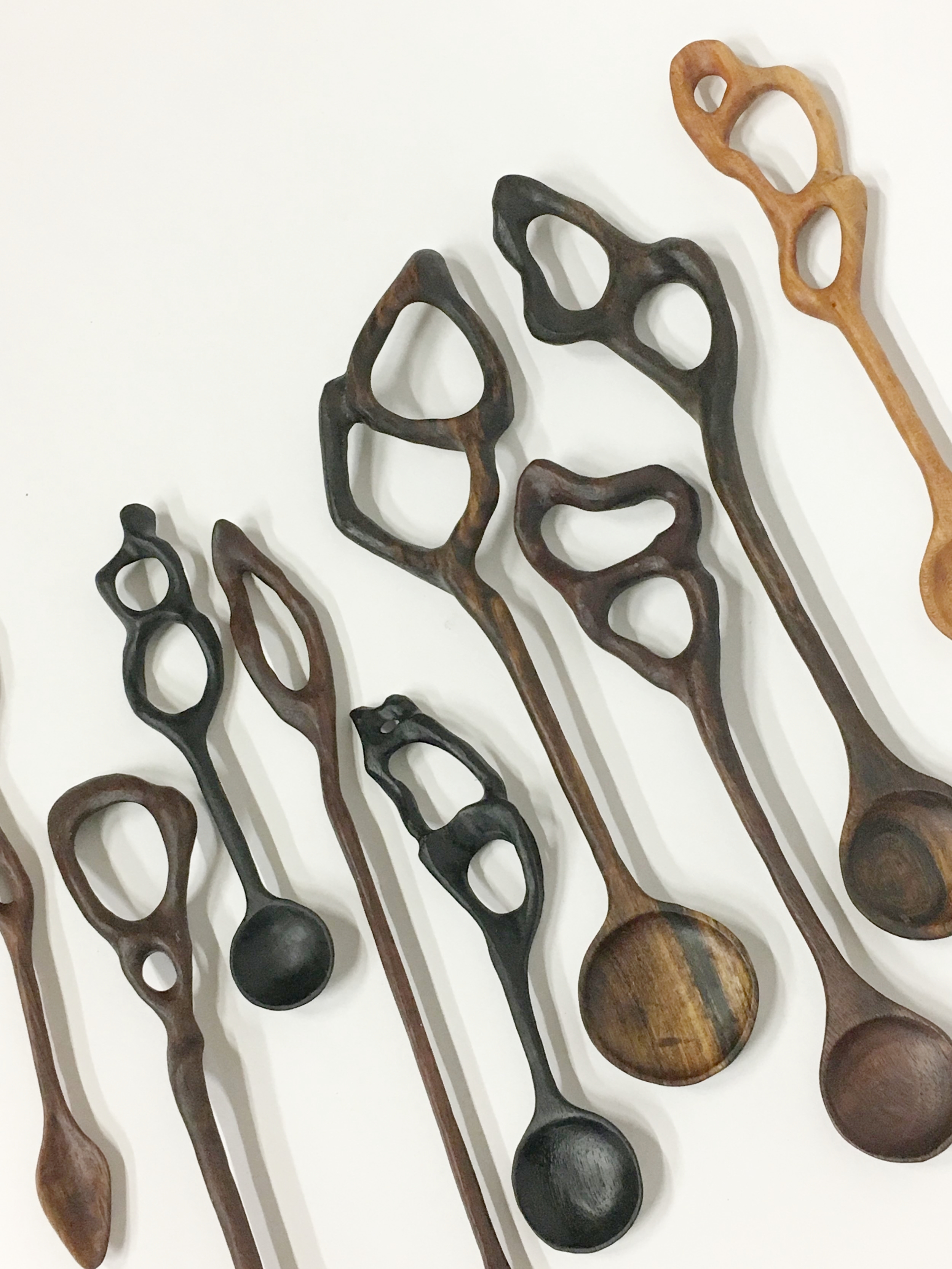Carving out a little time for myself. . .
Spoons! Ebony, dark walnut, maple, bacote. . .so dang pretty!
Nothing stresses me out more than being incapable of making. It’s my stress relief, pure catharsis, for me to get something out of my head and into my hands. Most of my projects require days and weeks of work, so when I need a quick fix, I’ve found that carving is my go-to.
Especially, spoons.
Extra large spoons made for Memphis designer Sean Anderson
The biggest spoons were 18" long! Safety glasses for scale.
A perfectly round bowl, thin but not flimsy, with a rich grain and elegant form. It flows into a slightly rounded handle, thin as a switch but strong as it follows the grain. Then I introduce a little bit of chaos. The clean lines and minimal design degrade, they split, they grow, they expand. Holes are eaten away, but not in the normal way for wood. Instead, I draw my inspiration from how rock corrodes, or the knobs of bone joints. Merging these elements of visceral organic forms with contemporary clean lines is like music to me.
Starts off as a boring block of wood...
A few rough sketches...
Then the bowl gets carved, the silhouette is cut, and the handle gets rough shaped!
Planning for most of my spoons is nominal. I like using naturally felled, or cast off pieces that no one else likes as the base. I flatten one side, and start drawing directly on the lumber. I’m quite meticulous on the bowl. Lining up the handle, or stem as I sometimes think of them, and keeping that straight is important. It flows directly towards the center of the bowl. It’s classic and recognizable. Gives the carving purpose. From there, I drag the pencil around the excess to give myself a rough shape. Intentionally, I leave a lot of fluidity to this. The less control the better.
Cutting out this rough shape on a scroll saw, it’s then on to shaping and carving. Bowl comes first, in order to make sure I don’t fuck that up after having the whole thing finished. Then I use a mixture of belt sanders, rotary carvers and sand paper to shape the back of the bowl, the handle and decayed end. After sanding, the spoon gets oiled heavily (mineral oil and bees wax) and left overnight. I cure my spoons several times, which means washing them as you would for normal use, with warm soapy water, then letting them dry. Light sanding, oil, sit, wash and repeat. It helps guarantee that the spoon has soaked up as much oil as possible so that it last longer. More on this later, I promise.
The spoon is done. It’s a process, and one that’s hard to explain. It’s fifty percent micro-managing, fifty percent letting go and just seeing what happens. I think that’s why I like making them so much. They’re utilitarian, but also sculptural. They’re designed for use, but I like the idea that people are almost intimidated to use them. ‘It’s just too pretty,’ someone told me once, when I asked her if she used the spoon I made for her much. ‘Use it, it’s just wood,’ I told her. ‘That stuff grows on trees.’
A time-lapse of one of the spoons being carved
